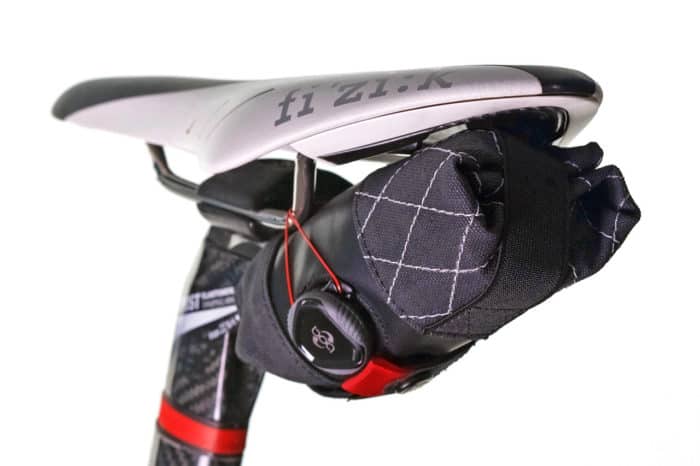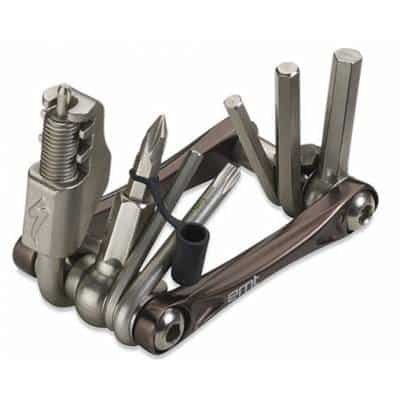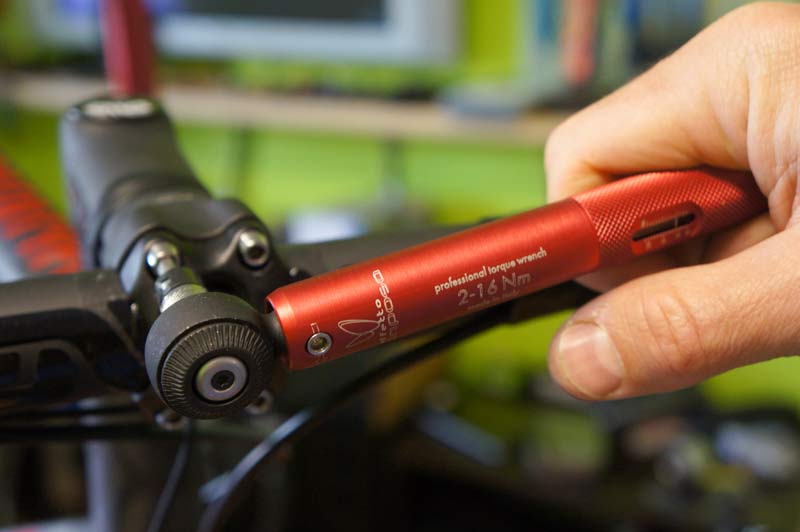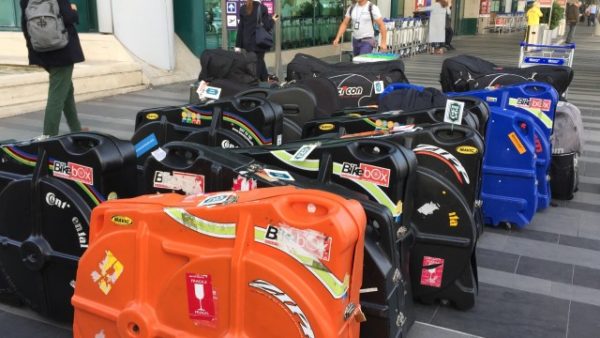How to Ship A Bike and How Much Will it Cost?
If you’re feeling a little lost about the best way to ship a bike, you’re not alone.
Shipping a bicycle is like changing a tire or learning to cook for yourself: it doesn’t look too impressive from the outside, but the feeling of satisfaction, tinged with relief, as your bike arrives in a single, well-treated piece is immense.
But how do you ship your bike from Point A to Point B, and which way is the best for you?
In this article, we’ll discuss the options, methods, and costs of shipping and tracking your bike to be sure that it arrives safe, sound, and ready for the road.
On This Page
Bike Packing Options
For packaging your bike, your options are refreshingly simple. You can either get a specialized bike case or bag, or you can rely on an uncomplicated cardboard box.
Bike Bags and Cases
Bike cases come in either softshell or hardshell configurations, and they’re pretty hard to beat for the level of protection they offer. Padded, reinforced, and lockable, these are perfect for someone who travels with their bike frequently and over long distances.
The main trouble with bike cases or bags is the fact that they’ll set you back at least $200 at the lower end of the range, in some cases rising above $1,000 for a premium hardshell.
Cardboard Boxes
The bike-specific cardboard box, meanwhile, is plain, cheap, and light.
Chances are you’re not constantly setting off to the next continent over with a high-grade performance bicycle in the hold, or moving to somewhere so distant and hostile that you’ll need the protection of a designated bike case.
Cardboard comes in a variety of configurations, grades, sizes, and prices, and there’s a reason it’s still unbeatable as packaging for most goods: nothing is more modular or versatile than this cheap, protective material.
If you’ve got the money to spare and would feel safer with a designated bike case, go for it. But keep in mind that cardboard is inexpensive, sturdy, affordable, and recyclable, and should work for most trips.
How to Pack the Bike?
First you’ll need to disassemble your bike’s components and pack it properly so that it’ll arrive safe, undamaged, and ready to reassemble.
For a standard road or mountain bike, this is pretty straightforward. Here are the steps you should take.
- Remove and deflate both wheels and remove the quick release/thru axles. This should be easily done with minimal hardware. Most bikes will only need a standard wrench to loosen fittings.
- Remove seatpost, pedals, and handlebars. Be sure to hang on to all of the hardware in a small container attached to the frame. Something like a sandwich bag should work.
- Brace the front fork with wood or stacked cardboard and turn it backwards towards the frame. This will ensure that the forks don’t get bent or take up too much space in the box.
- Wrap the tubes, removed components, small parts (cassette, derailleur, chain, etc.) in padding and secure handlebars to the frame. Padding these parts will help protect the bike both from mechanical and cosmetic damage.
- Place the bike in the cardboard box or bike case and stuff the remaining empty space with packing material like bubble wrap. Before sealing, make sure everything inside is secured.
You should also be careful not to overfill the box or bike bag.
If you’re new to shipping something so large and so valuable, it can be tempting to absolutely cram the box or bag with every cushioning material you can find.
But remember that as long as there’s not excessive movement inside and it’s not visibly bulging, it’ll work a lot better and reduce headaches and worries for you.
Ways to Secure the Package
There are any number of ways to make sure your bike is packaged and secured as best as it can be, and most of them are either easy to do at home or simple enough to get hold of.
One of the first you should always do is load the disassembled bike into the box, cushion and pack it as well as possible, and then firmly shake it to see if there are any pieces or parts loose or badly packed. If you discover any, wrap some cushioning or padding around it and repeat until the package is completely stable.
There are a handful of materials that are unusually useful for packing bikes, including :
- Foam tubing
- PVC pipe
- Packing peanuts
- Cable ties
- Bubble wrap
- Extra paper materials like egg cartons
- Tape
Each of these can be used to great effect with specific parts of your bike. Foam tubing can be secured to the frame with cable ties, while sensitive parts like derailleurs and hangers can be nimbly wrapped and cushioned with bubble wrap.
Shaped and reinforced cardboard, like egg cartons or the bracing cardboard from television packaging, can be used to stabilize wheels and the bottom of the box.
As long as moving parts are secured and sharp ends and edges are blunted, you can rest easy knowing that you’ve done all you need to to protect your bike and make sure it gets to your destination.
How Much Will it Cost?
To get an idea of how much shipping might cost, we’ve compared five companies’ pricing for shipping between six of the most popular destinations for cycling in the United States.
This is what you can expect for an average weight bike of 18 lbs. between these locations. Rates shown are the lowest price available within a week of shipping.
Here’s how they measure up. Price is accurate as of 22 January 2020.
| Marin County, CA to Asheville, NC | Tucson, AZ to Burlington, VT | Austin, TX to Durango, CO | |
|---|---|---|---|
| FedEx | $45.67 | $45.67 | $25.64 |
| USPS | $202.35 | $202.35 | $139.65 |
| Bike Flights | $61.95 | $61.95 | $47.95 |
| Ship Bikes | $45.98 | $45.98 | $33.71 |
Each of these offers different advantages.
Obviously, the cost will change depending on where you’re shipping to, the weight of your bike, and what you’re including.
Batteries and electronics, for example, can cost extra. Even the more expensive service, the US Postal Service, has advantages in that it comes with extra guarantees and insurance.
Make Sure the Package is Tracked and Insured
If you’re shipping anything heavier than a letter, don’t be surprised if the costs start to rack up.
When this happens, it can seem tempting to try to skimp on the price in every way you can, but keep in mind that this is your bike, and you want it to be protected and guaranteed as much as possible.
Some companies, like FedEx and the USPS, will include tracking and insurance as part of their standard service, while others may offer it only as an extra. While this can drive up the final cost of your package, just bite the bullet and get the extras anyway.
You’ll feel a lot better for having the tracking number and the guarantee that your bike will arrive safe and sound.
Allow Ample Time for Transit
One further thing to remember (when shipping anything) is that you should plan ahead and have some patience.
Same-day or next-day shipping will be more expensive, more prone to mishaps and delays, and is generally unnecessary if you have your trip planned well in advance.
If you allow yourself plenty of time, you can be sure that your pack and secure the bike properly with time left for last-minute checks; that the shipping agency can take charge of and understand your needs without any need to rush or risk misunderstanding; and you’ll give yourself the opportunity to be sure that your bike arrives on time, in good shape, and with you or a friend at the other end to pick it up or take delivery.
Summing Things Up
Shipping your bike can feel mystifying before you give it a try, so it’s important to remember the steps in this article before you set off on your trip.
By keeping in mind the importance of packing, securing, and choosing the best shipping options for your bike, you can ensure that your ride won’t be interrupted, no matter where you or your bike end up.
Author Recommended Reads




